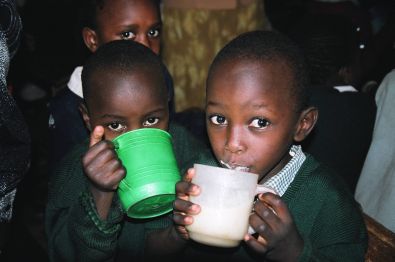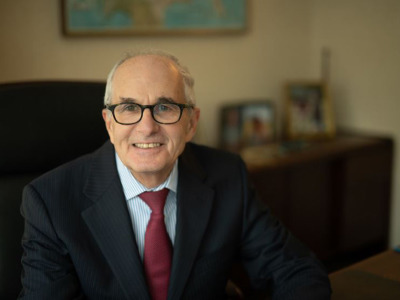Agriculture is a business, a very big business. Whether you look at net farm income, agriculture exports or the number of people employed in the farm and food value chain, agriculture is big business by any criteria.
As the Old Testament tells us, however, agriculture is more than just a business. Agriculture is special. Agriculture provides the basic sustenance for all of us and we have an obligation to help the hungry.
It is therefore very troubling that according to the Food and Agriculture Organization (FAO) there are still 842 million people, or one in eight, who are suffering from chronic hunger or food insecurity. FAO defines food insecurity as not getting enough food to conduct an active life. This is a lower number than the 868 reported a few years ago and the number of undernourished has fallen by 17 percent since 1990-92.
The United Nations World Food Program (WFP) is the largest humanitarian agency fighting hunger worldwide, providing food to more than 97 million people in 80 countries last year. WFP crosses some of the toughest terrain on the planet to get food to hungry people. On any given day, WFP operates an average of 50 aircraft, 30 ships and 5,000 trucks. With its own fleet of airplanes, ships and logistics staff WFP staff frequently risk their lives to reach those with the highest risk of starvation.
WFP also provides school meals to more than 24 million children each year. School meals help to improve children’s nutrition, ability to learn and life chances. School feeding also gives poor families an incentive to send children to school, especially girls.

Food insecurity, compared to “hunger” is a more complex condition. According to the FAO, its dimensions are a series of indicators including food availability, access, utilization and stability. Asia has the largest number of hungry people (over 500 million) but Sub-Saharan Africa has the highest prevalence (24.8 percent of population). Three-quarters of all hungry people live in rural areas, mainly in the villages of Asia and Africa. Overwhelmingly dependent on agriculture for their food, these populations have no alternative source of income or employment.
FAO calculates that around half of the world's hungry people are from smallholder farming communities, surviving off marginal lands prone to natural disasters like drought or flood. Another 20 percent belong to landless families dependent on farming and about 10 percent live in communities whose livelihoods depend on herding, fishing or forest resources.
“Half of those who are food insecure are smallholder farmers.”
Rick Leach, President, WFP-USA
Howard Buffett hit the nail on the head when he said, “Small-scale farmers play a crucial role in fighting global hunger and poverty, both for their own families and for the regions in which they live." For that reason, the effort to help smallholder farmers is fast becoming the focus of attention in the fight to eliminate food insecurity:
· Feed the Future, the U.S. Government’s global hunger and food security initiative, supports country-driven approaches to address the root causes of hunger and poverty. Through this Presidential initiative, the United States is helping countries transform their own agricultural sectors to grow enough food to sustainably feed their people.
· In 2012, the G 8 (now G 7) committed to working with our African and other international partners, to launch a New Alliance for Food Security and Nutrition to accelerate the flow of private capital to African agriculture, take to scale new technologies and other innovations that can increase sustainable agricultural productivity, and reduce the risk borne by vulnerable economies and communities.
· The African Union’s Comprehensive Africa Agriculture Development Programme (CAADP) program is urging all African governments to invest at least 10 percent of their national budgets in agriculture.
· The Bill and Melinda Gates Foundation’s agricultural development strategy is “premised on a hypothesis that it is possible for smallholder farmers to double and in some cases even triple their yields in the next 20 years while preserving the land. Increased productivity growth will contribute to overarching goals of hunger and poverty reduction.”
· The Alliance for a Green Revolution in Africa is focused on assisting smallholder farmers across Africa.
· According to the Office of Food Security at the State Department we need to increase global food production by 70 percent before 2050. Women make up the majority of the agricultural workforce in many areas of the world. Yet today, for every investment we make in producing food, we fail to get the best results because MANY women lack the access they need to land, seeds, water, credit and markets.
The 2013 Millennium Development Goals Report says that the target of halving the percentage of people suffering from hunger and food insecurity is within reach. That is correct; with concerted action by national governments, international partners and the private sector focused on smallholder women farmers, the hunger target can be achieved.
The bottom line is that assisting smallholder farmers boost production is the key to both reducing food insecurity and at the same time improving economic development and political stability. Africa, in particular, is on the cusp of dramatic change as it has over half of the world’s underutilized agriculture land. We can do this!
Marshall Matz specializes in agriculture and global food security at OFW Law in Washington, D.C. He serves on the Board of Directors of the World Food Program---USA and the Congressional Hunger Center. Before entering private practice, Marshall was General Counsel to the Senate Select Committee on Nutrition and Counsel to the Senate Committee on Agriculture. mmatz@ofwlaw.com.

